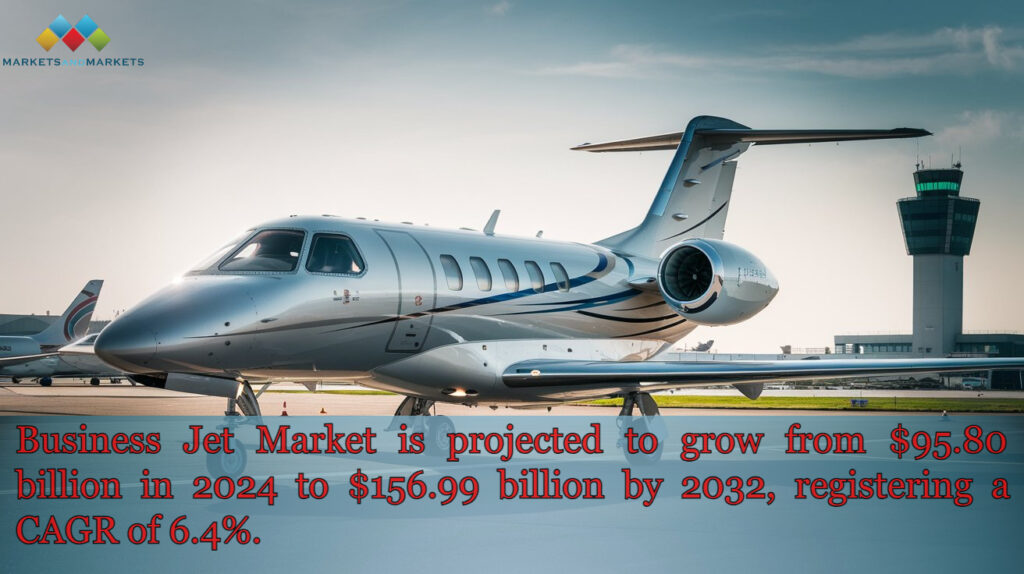The business jet industry serves as a critical component of global aviation, catering to the exclusive needs of high-net-worth individuals, corporations, and government bodies seeking private air travel. With its inherent advantages of convenience, flexibility, and time efficiency, the sector has seen consistent growth, fueled by increasing demand for tailored travel experiences and the expansion of the global economy. The industry offers a wide variety of aircraft, ranging from light jets to ultra-long-range models, designed to provide varying levels of luxury and operational performance.

The business jet market is projected to expand significantly, growing from USD 95.80 billion in 2024 to USD 156.99 billion by 2032, with a compound annual growth rate (CAGR) of 6.4%. This growth is propelled by rising demand for private travel, sustainability-driven technological advancements, and overall global economic development. Advanced designs in new business jets are focusing on performance improvements, noise reduction, and aerodynamic efficiency. Innovations in propulsion systems, lightweight materials, and avionics are anticipated to lower operating costs and improve fuel economy while enhancing passenger comfort. These improvements are also boosting the appeal of pre-owned jets, as retrofitting older aircraft with the latest technologies has become a popular trend among buyers seeking cost-effective solutions.
Technological innovations, including enhanced fuel efficiency and cutting-edge in-flight connectivity, are driving the future of the business jet market. Despite its growth potential, the industry is faced with challenges such as environmental concerns, regulatory shifts, and the fluctuating global economy, which could influence future demand.
Download PDF Brochure @
https://www.marketsandmarkets.com/pdfdownloadNew.asp?id=33698426
Key Players in the Business Jet Market
Leading companies in the business jet market include Bombardier Inc. (Canada), Boeing (US), Dassault Aviation (France), Honda Aircraft Company (US), Airbus (Netherlands), and Piper Aircraft (US). The market is witnessing rapid technological developments among these industry giants, who continue to shape future trends through innovation and strategic growth.
Market Segmentation and Growth Drivers
Point of Sale: The market is segmented into pre-owned, OEM, and aftermarket categories. The pre-owned segment is expected to achieve the highest CAGR from 2024 to 2032 due to increased interest in cost-effective alternatives to new aircraft. Pre-owned jets, retrofitted with modern avionics and interiors, are becoming more popular because of their immediate availability and the ability to integrate advanced technologies.
End-Use: The business jet market is divided into private users and operators. The operator segment is forecasted to have the highest CAGR during the forecast period. This growth is driven by an increase in charter companies and fractional ownership providers, offering flexible and cost-efficient private air travel solutions. The ability of operators to scale and cater to a diverse range of clientele, offering services from ad-hoc charters to comprehensive flight management solutions, is fueling this segment’s expansion.
Ask for Sample Report @
https://www.marketsandmarkets.com/requestsampleNew.asp?id=33698426
Regional Insights: Geographically, the business jet market is divided into North America, Europe, Asia Pacific (APAC), Latin America, the Middle East, and Africa. North America is expected to lead the market with the highest CAGR during the forecast period. Economic stability, a large number of high-net-worth individuals, and a concentration of business jet manufacturers, service providers, and operators are driving the growth of the North American market.